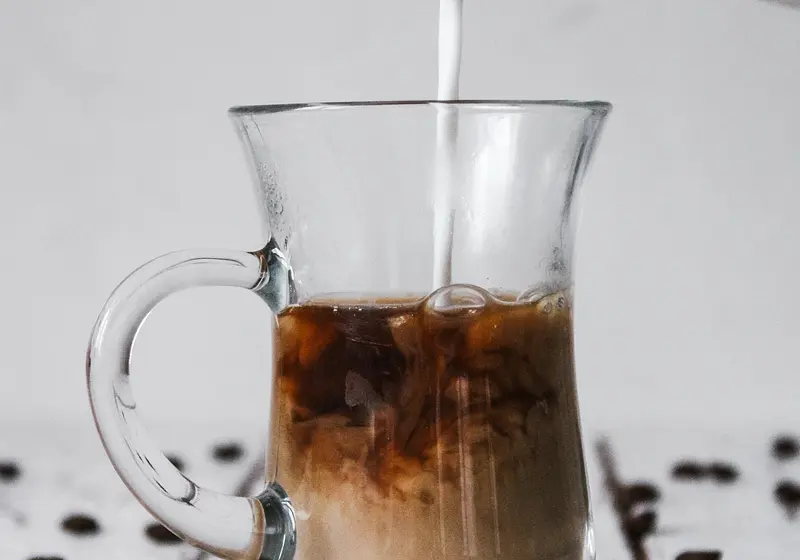Ooo, do you smell that? The smell of roasted, earthy coffee grinds freshly brewed flying through the air. While Americans do love coffee for its impeccable taste and aroma, many Americans drink coffee for the energy needed to get through their day and not for the flavor or experience.
Some even see it as a rite of passage into adulthood and working life. However, in most other parts of the world, coffee is truly an art and may even be a massive part of a country's culture. Below, you will find the customs and history behind the coffee culture of 5 countries from around the world and details on some of their most famous coffee drinks.
Let us slide into your dms 🥰
Get notified of top trending articles like this one every week! (we won't spam you)Origins of Espresso: Italy
First up is Italy. The Mediterranean country has a long-standing tradition that involves espresso and cafés/coffee bars. Espresso was invented in Italy by Angelo Moriondo and patented in 1884.
Believe it or not. But, espresso didn't start with the mass popularity it has today, with the main reasoning being that it wasn't widely available throughout the country and world in its origin. As for the coffee taste, they leave the beans to roast to a deep brown color, which diffuse distinct acidic flavors ranging from bitter-sweet to hints of charred taste.
When indulging in their coffee, Italians only drink cappuccinos in the morning and often drink espresso in the mid-afternoon for a midday pick-me-up. You mostly won't ever find an Italian native drinking a cappuccino after 11 am; since they believe drinking milk-based coffee drinks in the afternoon will cause indigestion. While sipping, you can find them speaking to the barista at the bar.
They use the traditional Espresso Machine to brew their coffee and keep it hot by placing it on top of the machine. Freshness is key to their consumption of coffee, which makes the preparation inseparable from the consumption.

Take the Quiz: Which Generation Matches Your Personality?
Discover the generation you truly belong to!
Premium Source: Mexico
Did you know that Mexico is the 9th largest coffee producer in the world? Yep, Mexico exported about 2.6 million 60-kilo bags in the last couple of years, marking their spot on the top 10 list. You may know them for their Chocolate; but, their coffee can challenge that popularity with several regions producing high-quality beans in the country. Mexican coffee tends to be lighter and mild with subtle flavors.
One of their most popular coffee beverages is Café de Olla, meaning coffee from the pot, which alludes to the process of how its creation. People tend to drink this type of coffee mostly during the wintertime and for Christmas celebrations. This spiced caffeinated drink consists primarily of cinnamon and piloncillo (a dark sugar resembling molasses) for a balance of sweet and spice with a dark roast.
Evolution of Coffee: Japan
Coffee was first introduced to Japan shores in the 16th century aboard Portuguese and Dutch ships and consumed for its medicinal and narcotic properties. However, over the years, the function and flavors of coffee had its unique evolution in the country. Because of Japan's economic boom in the latter half of the 20th century, coffee's presence in their society became increasingly popular, especially among business associates.
Japanese people prefer dark roast with a rich, round, and uncomplicated taste. You may have seen their outstanding 3D cappuccino art somewhere on social media or the internet (the one with the cute little cats on top). They take great pride in the consistency and detail of their coffee preparation, which makes the process a ritual.
The Art of the Unusual: India
Now, India's coffee origins have quite a peculiar start and history. In 1640, while on pilgrimage to Mecca, a man named Baba Budan, an infamous Indian saint, fell in love with these popular coffee beans called Mocha beans named after the city of its cultivation. He ended up smuggling in seven of these beans into India and amassing an abundant planting of these beans in his backyard.
You can find a wide variety of flavors and aromas in Indian coffee. Because coffee plantations in India are often beside land with other crops, Indian coffee beans can take on different distinct flavors ranging from spicy or woody to fruity or floral flavors. Many people use a traditional method unique to India called Kaapi, which means meter coffee. You can achieve the frothy filtered coffee by alternating the pouring of the coffee between two containers at an extreme height.
Ritualistic Ceremony: Ethiopia
Ethiopia has one of the longest-known histories of coffee production in the world. There is a belief that coffee cultivation began there in the ninth century. The Ethiopian people take their coffee seriously and even have a saying Buna dabo naw, which means coffee is our bread.
Through this saying, they solidify how important coffee is to them and how it is a central part of their culture and diet. Most Ethiopians drink Jebena coffee, named after the clay pot it is boiled in. The women of the household take the responsibility to boil the coffee and prepare the coffee ceremonies they often have three times a day.
Some Ethiopians who practice Islam believe coffee has spiritual properties that lend to the transformation of the spirit. The coffee preparation consists of roasting the beans until blackened, grinding them with a pestle in a mortar into a coarse ground, and then boiling it with water over hot coal. They usually enjoy it with only an ample amount of sugar.
Which one of these coffee traditions/recipes would you love to try?













.jpg)

